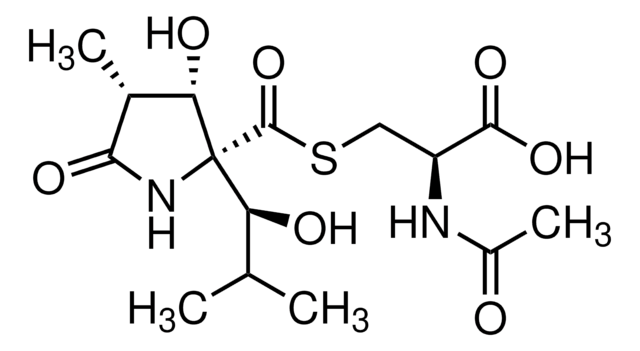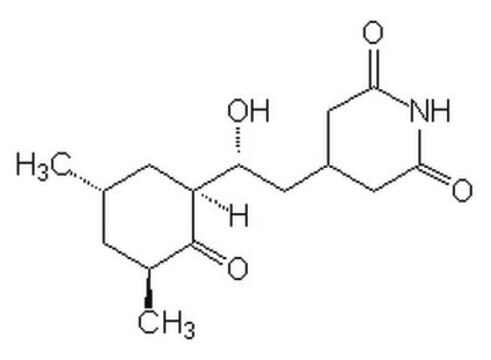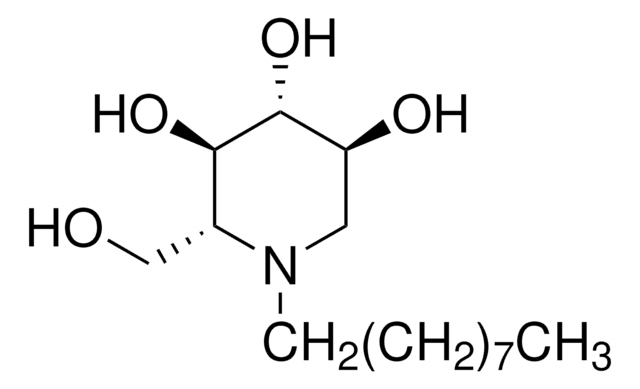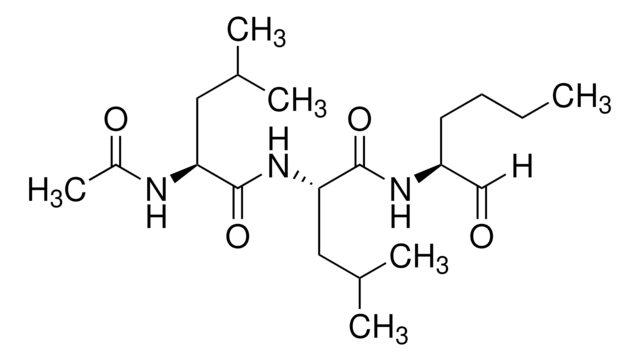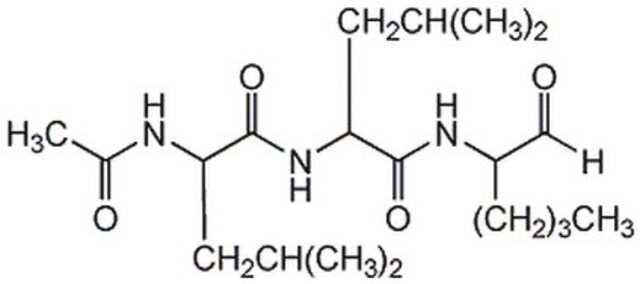SML1135
MG-132(R)
≥95% (HPLC)
Synonim(y):
Z-L-Leu-D-Leu-L-Leu-al
About This Item
linia produktu
SAFC Hitech®
Poziom jakości
Próba
≥95% (HPLC)
Postać
powder
rozpuszczalność
DMSO: soluble
temp. przechowywania
−20°C
ciąg SMILES
O=C(N[C@H](CC(C)C)C(N[C@H](C=O)CC(C)C)=O)[C@H](CC(C)C)NC(OCC1=CC=CC=C1)=O
InChI
1S/C26H41N3O5/c1-17(2)12-21(15-30)27-24(31)22(13-18(3)4)28-25(32)23(14-19(5)6)29-26(33)34-16-20-10-8-7-9-11-20/h7-11,15,17-19,21-23H,12-14,16H2,1-6H3,(H,27,31)(H,28,32)(H,29,33)/t21-,22+,23-/m0/s1
Klucz InChI
TZYWCYJVHRLUCT-ZRBLBEILSA-N
informacje o genach
human ... CTSB(1508) , NFKB1(4790) , PSMA1(5682)
Powiązane kategorie
Działania biochem./fizjol.
Informacje prawne
Kod klasy składowania
11 - Combustible Solids
Klasa zagrożenia wodnego (WGK)
WGK 3
Temperatura zapłonu (°F)
Not applicable
Temperatura zapłonu (°C)
Not applicable
Certyfikaty analizy (CoA)
Poszukaj Certyfikaty analizy (CoA), wpisując numer partii/serii produktów. Numery serii i partii można znaleźć na etykiecie produktu po słowach „seria” lub „partia”.
Masz już ten produkt?
Dokumenty związane z niedawno zakupionymi produktami zostały zamieszczone w Bibliotece dokumentów.
Klienci oglądali również te produkty
Nasz zespół naukowców ma doświadczenie we wszystkich obszarach badań, w tym w naukach przyrodniczych, materiałoznawstwie, syntezie chemicznej, chromatografii, analityce i wielu innych dziedzinach.
Skontaktuj się z zespołem ds. pomocy technicznej